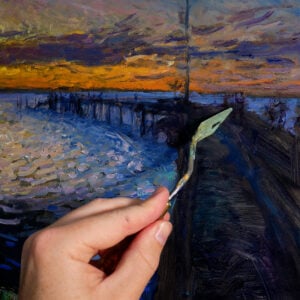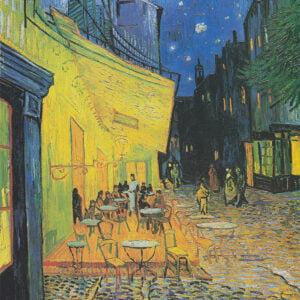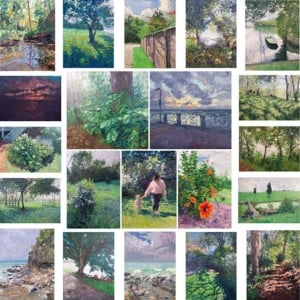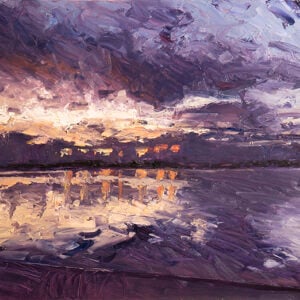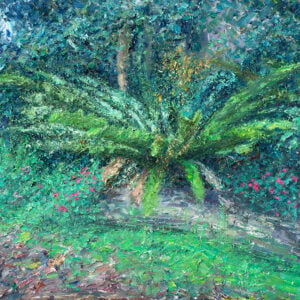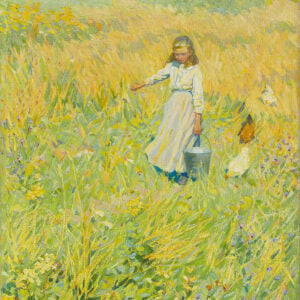Blending is a painting technique where two different colors are slightly mixed together when wet, giving a smooth transition from one color to the next. The transition color will be a product of the two blended colors (i.e., if you blend blue into yellow, the transition color will be green).
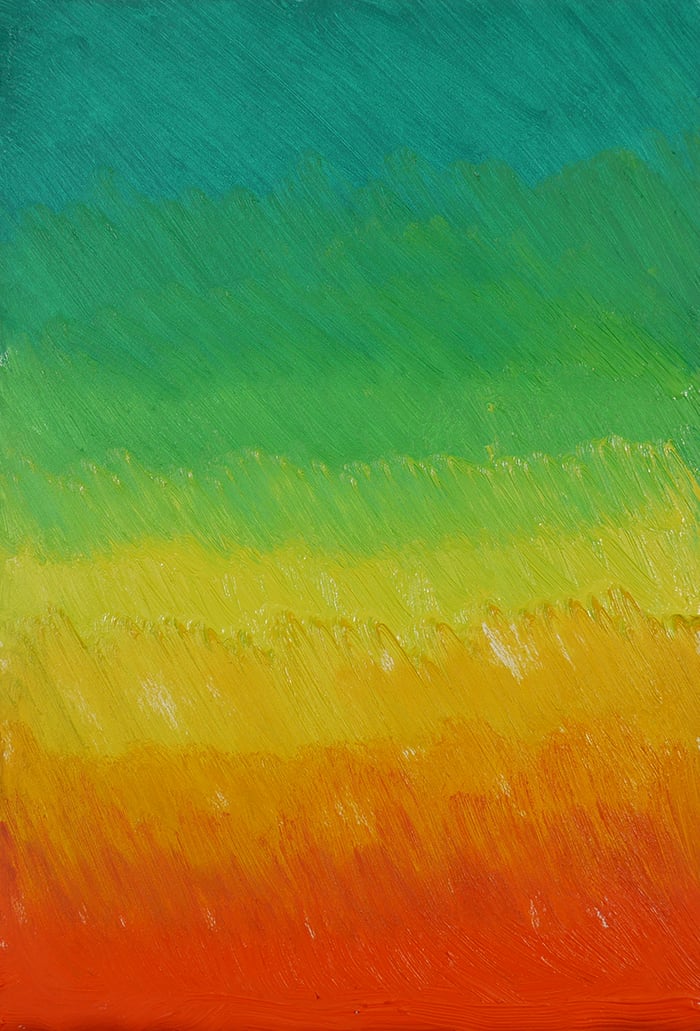
Blending requires the paint to be wet, which is a problem when painting with acrylics as the paint tends to dry extremely fast. The blending technique is much more popular with oil painting, as the paint stays wet and versatile for much longer.
Blending is probably one of the most overused techniques by beginner painters, as they aim to create a very smooth and ‘realistic‘ painting. However, too much blending can easily lead the painting having a very plastic and over-refined appearance.
Blending is much more effective when used sparingly when necessary. Brush strokes and colors should otherwise be left unaltered. Whilst up close the painting may look rough, as one steps back from the painting all the brush strokes and broken colors will optically merge and create the illusion of form.
Do not make the mistake of trying to make the painting look perfect from up close. If you are not sure what I mean, then take a look at some of John Sargent’s paintings. Up close, they seem like a mess of bold strokes and colors. But as you step back the painting all comes together.
Want to Learn More?
You might be interested in my Painting Academy course. I’ll walk you through the time-tested fundamentals of painting. It’s perfect for absolute beginner to intermediate painters.
Thanks for Reading!
I appreciate you taking the time to read this post and I hope you found it helpful. Feel free to share it with friends.
Happy painting!
Dan Scott

Draw Paint Academy

